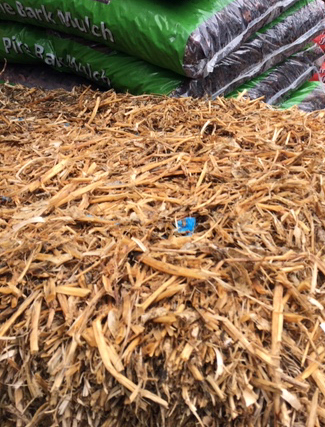Insulation for your garden!
Mulch drastically reduces the amount of time spent weeding and watering. As it rots down it becomes wonderful compost – a great way of adding nutrients to your garden.
The best time to apply mulch is well before the hotter months have arrived. The decomposition process can begin plus sufficient Winter and Spring rains will have penetrated through to the ground beneath. A top up may be needed from time to time to replace the volume that has been reduced due to decomposition.
Where to apply
Mulch plants to the edge of the drip line. It is essential to mulch out this far because the root system generally extends to the edge of the drip line of the plants canopy.
CAUTION. Keep mulch away from the stems of your plants as it may cause them to rot at the base due to excessive moisture against the trunk.
What to use
Pea Straw
An excellent mulching material, however most other straws are effective too. When you put straw down, lay it out in “biscuits” to make a mosaic of straw providing complete cover.
Pine Bark
A popular mulching material, but unfortunately does not add nutrients to the soil.
Pebbles
Can be used for a more modern look. But unlike organic mulches, pebbles add no nutrients to the soil.
How to apply
First lay 8 – 10 sheets of wet newspaper on the ground. This acts as a barrier for weeds and aids in moisture retention – environmentally friendly. You could use weed mat instead of newspaper. The weed mat will last longer but does not retain the water as well as newspaper does.
Then apply 10 – 15cm (4 – 6 in) minimum of any mulch material. Any thinner and the weeds will penetrate and the wind may blow it away.

